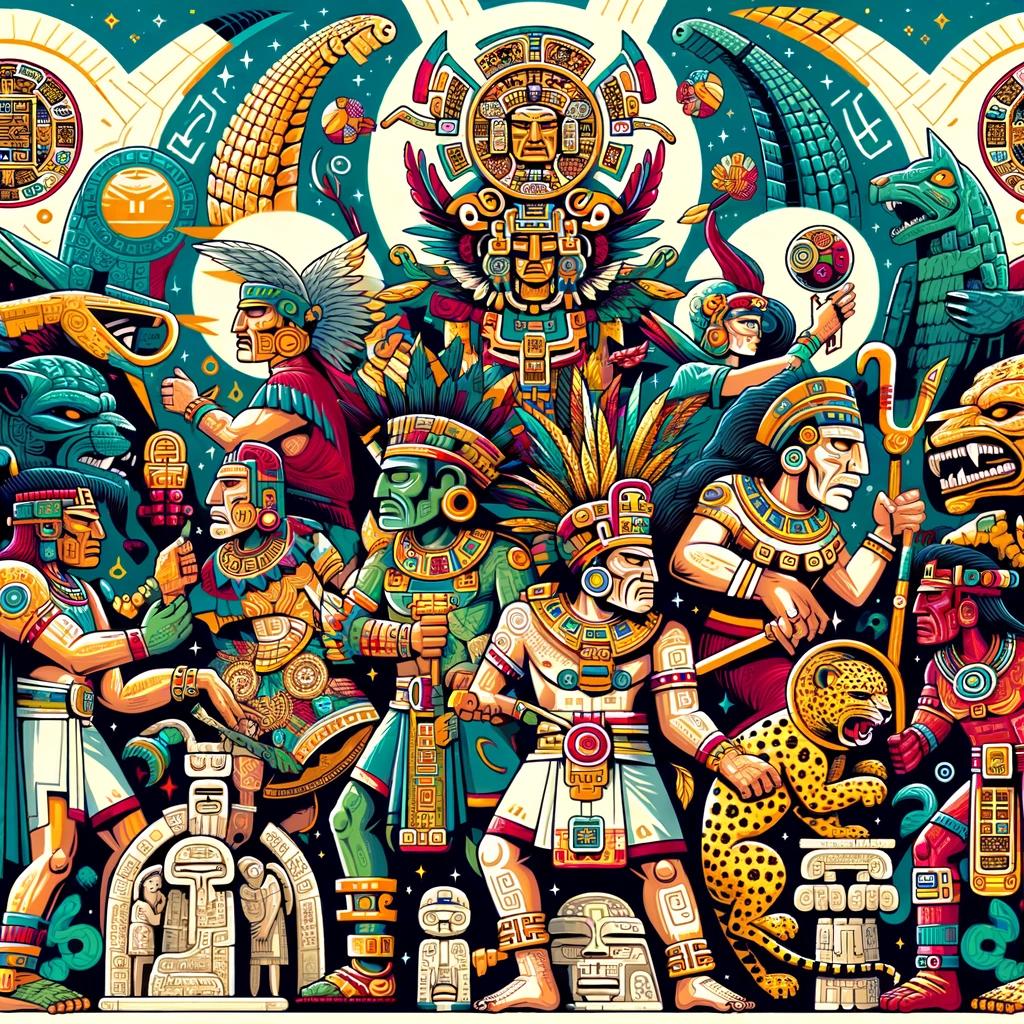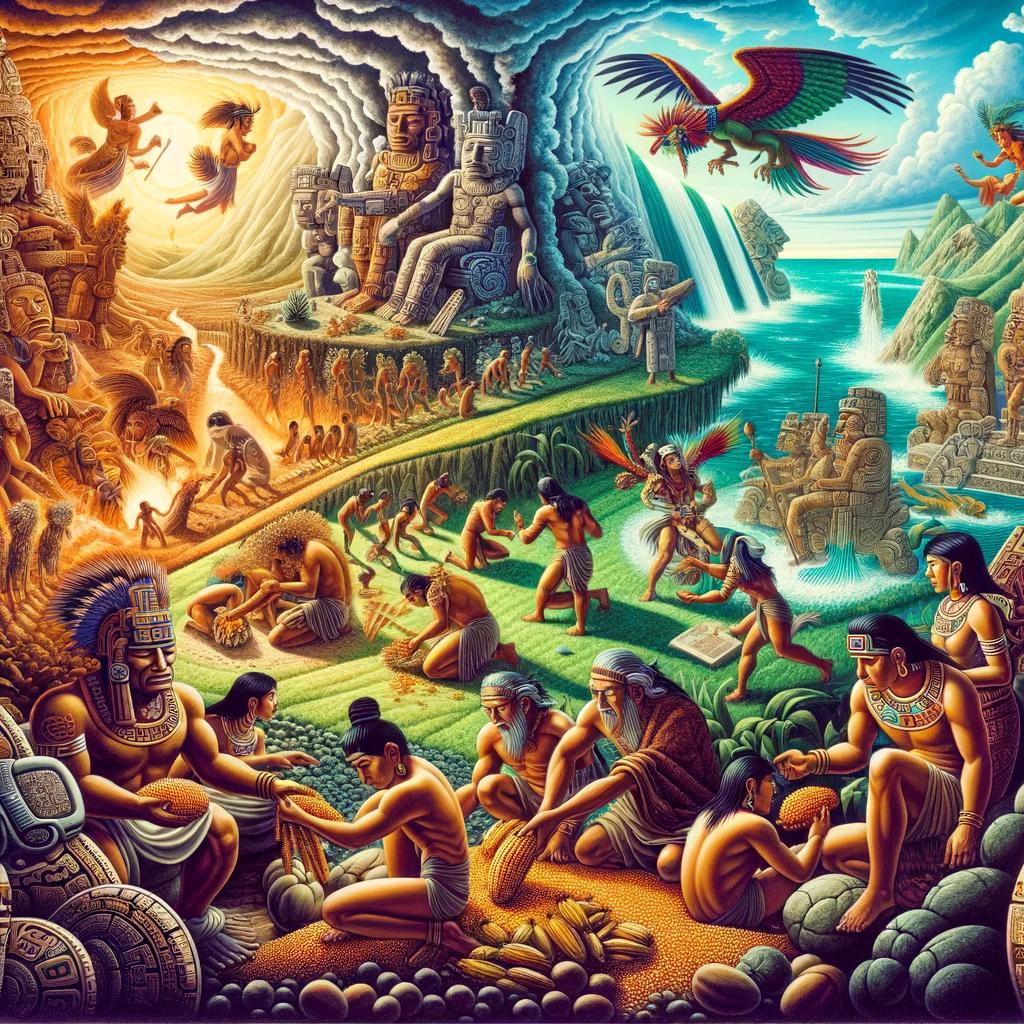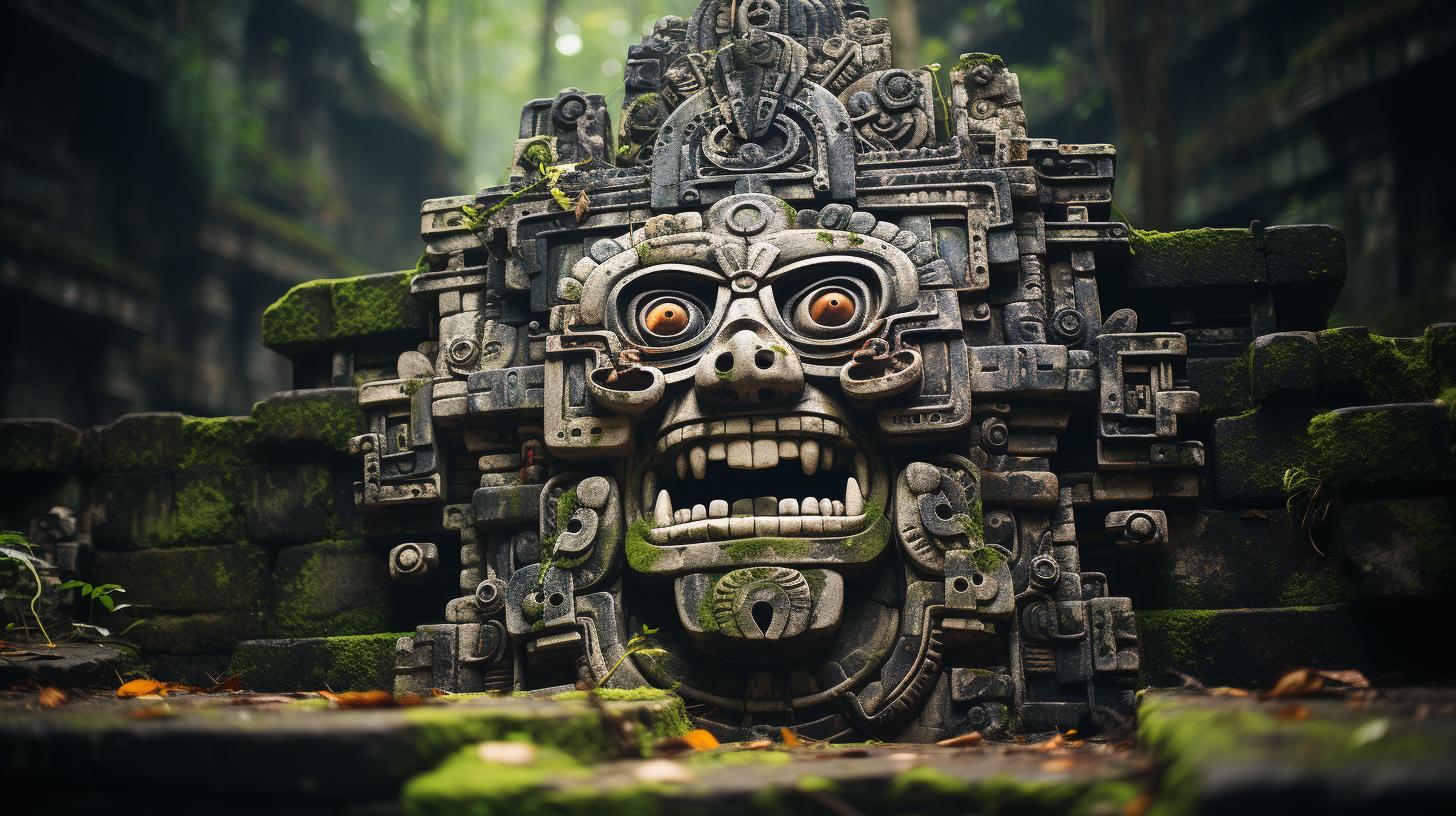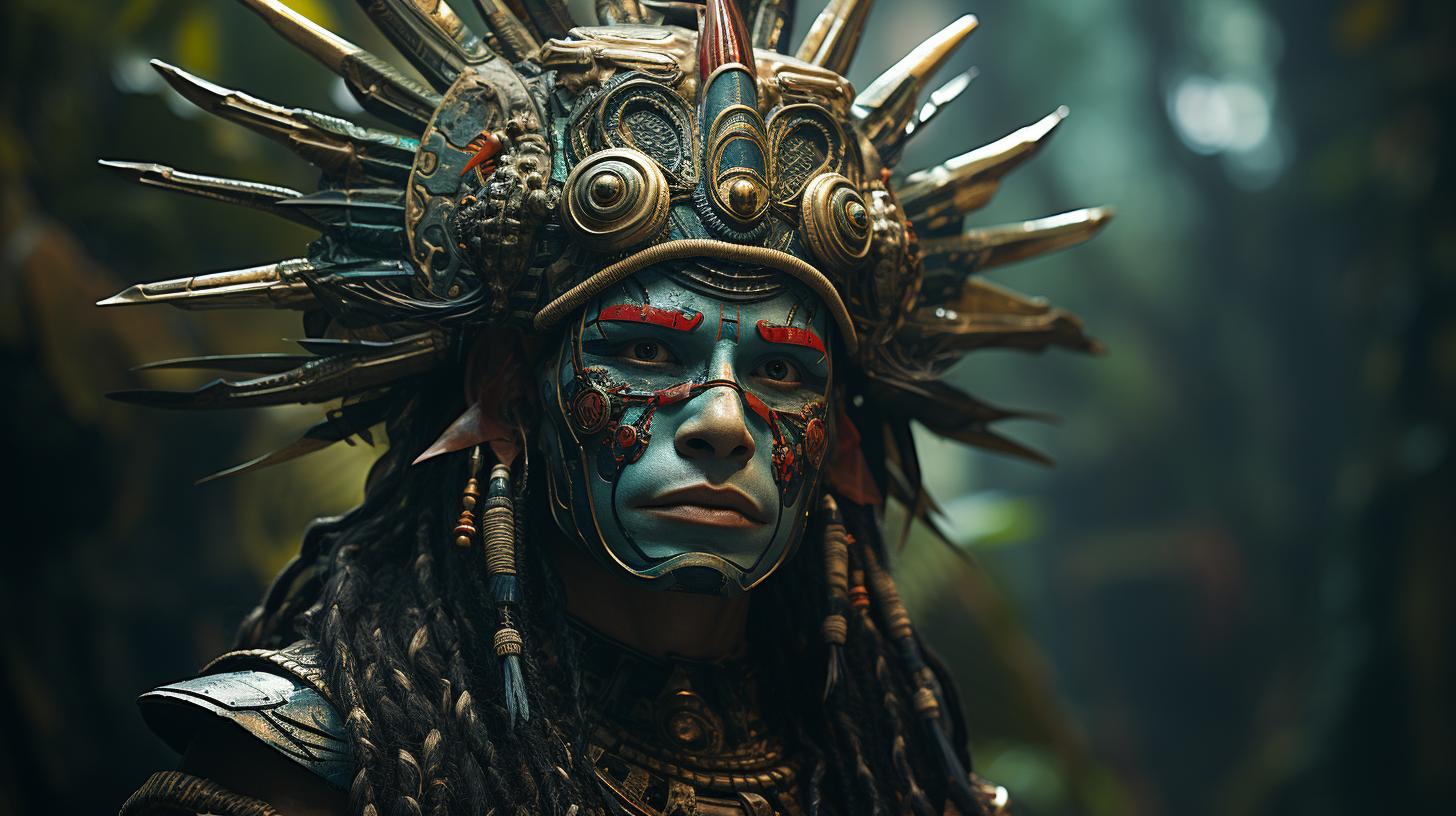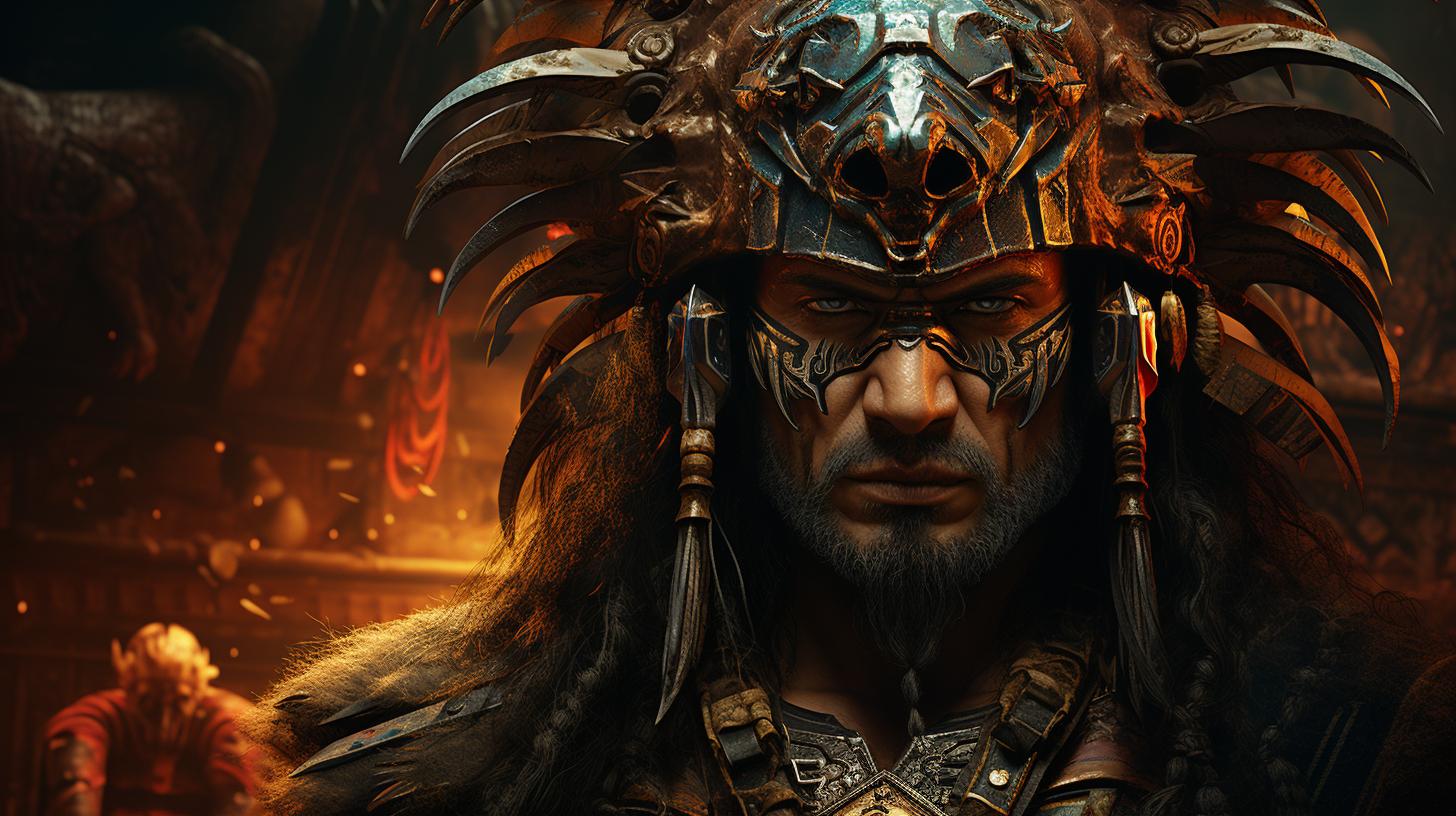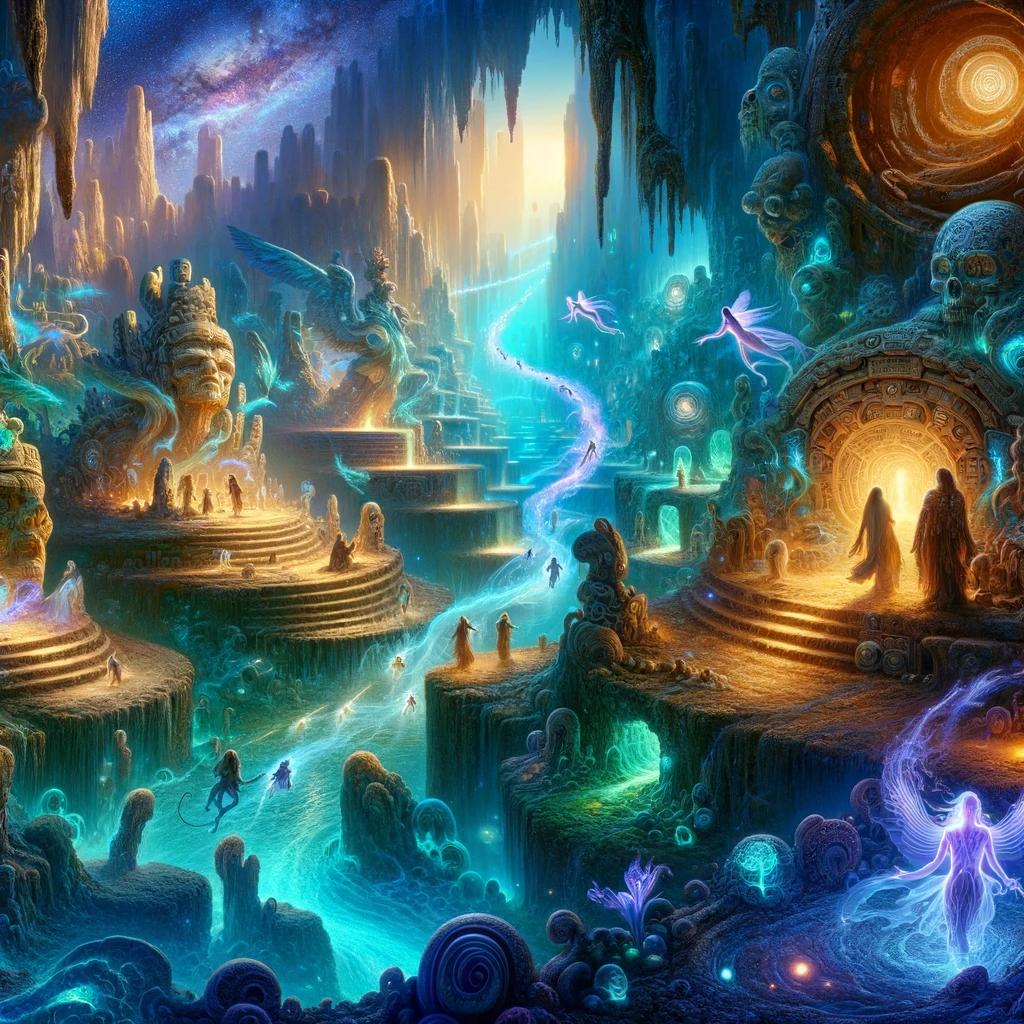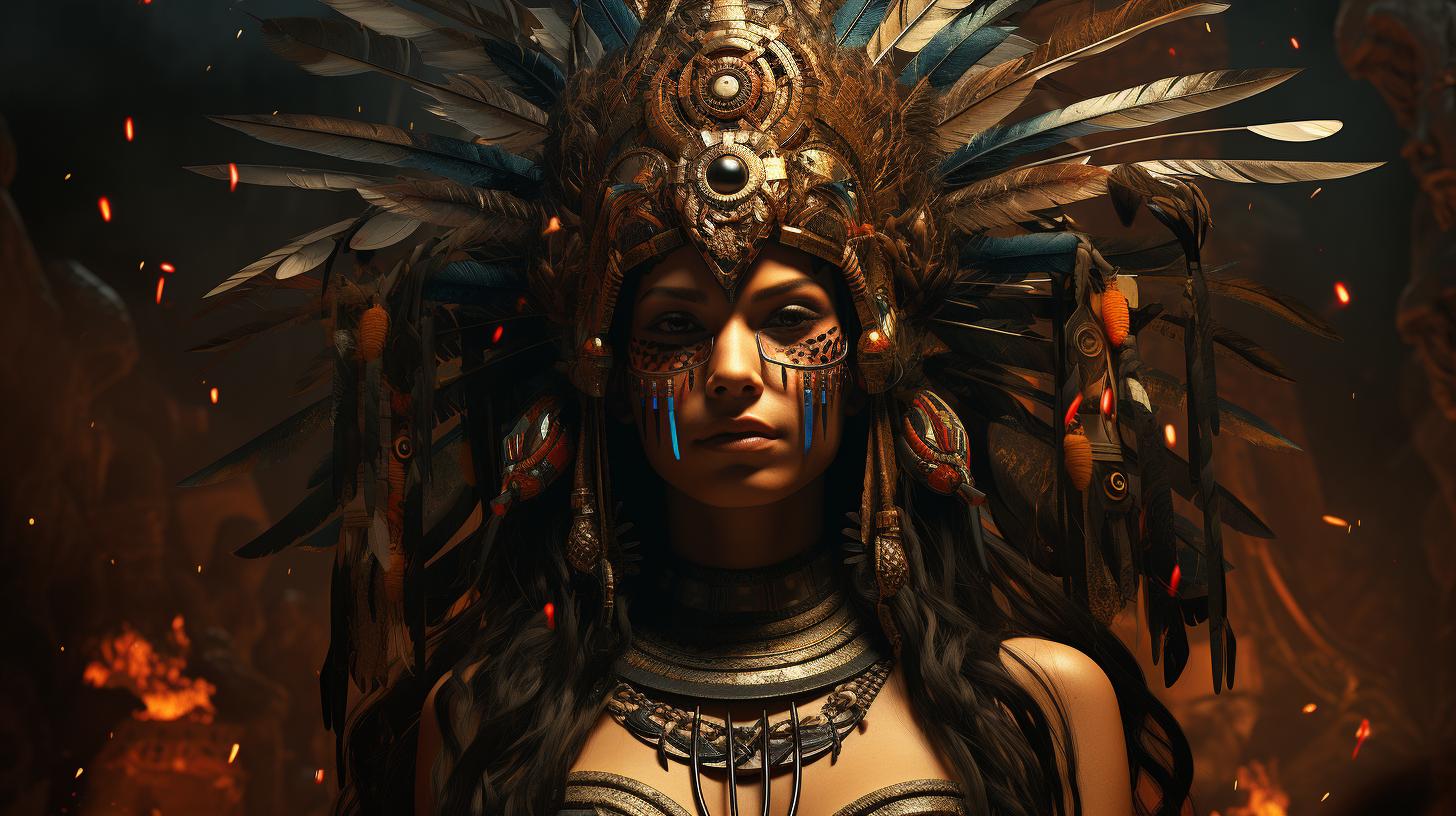Mayan Mythology Characters: Discover the Mystical Beings of Ancient Maya Civilization
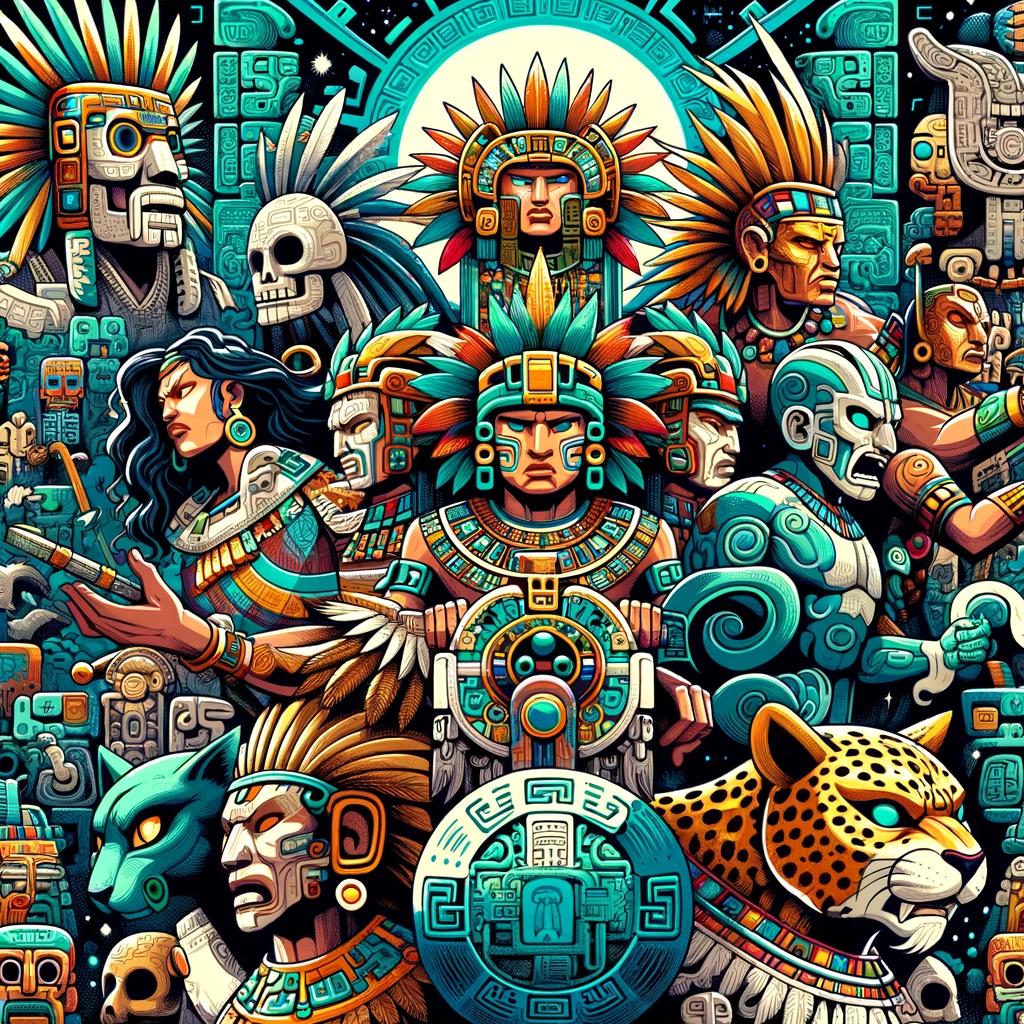
Mayan Mythology Characters are a fascinating part of the ancient Maya civilization. From powerful gods like Itzamná, the god of the sky, to legendary hero twins Hunahpu and Xbalanque, these mythical beings played significant roles in Mayan religious beliefs and cultural traditions.
In addition, the Mayan pantheon features a diverse array of gods and goddesses, such as Kinich Ahau, Yum Kaax, and Ixchel, each with their own symbolic importance. The Mayan underworld, known as Xibalba, was also a central concept in their mythology, accompanied by gods and creatures associated with this realm.
Furthermore, patron gods like Hun Hunahpu, Kukulkan, and Ixamna held special significance in various aspects of Mayan society, including travel, art, and creativity. Exploring the Classic Period, we can observe the influence of Mayan mythology in their art, architecture, and even ancient texts like the Popol Vuh and Madrid Codex.
Overall, Mayan Mythology Characters offer a unique glimpse into the rich cultural heritage of the Maya civilization.
Itzamná – The God of the Sky
Itzamná, the God of the Sky, holds a prominent place in Mayan mythology. As a significant deity, Itzamná occupies a central role in Mayan religious beliefs and cultural traditions. Let’s explore the origins, legends, symbolism, representations, and the influence of Itzamná on Mayan religion and culture.
Origins and Legends of Itzamná
According to Mayan mythology, Itzamná played a vital part in the creation of the world. He is believed to be one of the thirteen creator gods, born from the breath of the supreme god, Hunab Ku.
Legends associate Itzamná with the creation of writing, calendars, and agriculture, making him a revered figure.
Symbolism and Representations of Itzamná
Itzamná is often depicted as an aged man with a long beard and sometimes shown with crossed eyes, symbolizing his association with wisdom and foresight. He is characterized by his regal appearance, adorned with a headdress featuring a bird or a serpent.
Itzamná’s symbols include the sun, representing his connection to the celestial realm, and the sacred ceiba tree, symbolizing the axis mundi.
Itzamná’s Influence on Mayan Religion and Culture
Itzamná’s influence extended beyond his role as the God of the Sky. He was revered as the chief deity and considered the founder of Mayan civilization. Itzamná’s domains include agriculture, healing, writing, and the arts, highlighting his significance in several aspects of Mayan society.
He served as a celestial intermediary, connecting the earthly realm to the divine, and played a crucial role in religious rituals, ceremonies, and the governance of the Maya people.
Hero Twins Hunahpu and Xbalanque
The Hero Twins, Hunahpu and Xbalanque, are central figures in Mayan mythology, featuring in numerous legends and stories.
They are portrayed as brave and cunning heroes who embarked on epic adventures to overcome various challenges and defeat formidable enemies. Through their trials and achievements, the Hero Twins symbolize bravery, resilience, and the triumph of good over evil.
The Epic Story of the Hero Twins
The story of the Hero Twins begins with their birth to the Moon Goddess, Ix Chel. However, their jealous half-brothers, the Lords of Xibalba, sought to eliminate them. The Hero Twins, guided by their father’s knowledge and supernatural abilities, embarked on a journey to the underworld to prove their worth and avenge their father’s death.
Trials and Adventures of Hunahpu and Xbalanque
During their journey, Hunahpu and Xbalanque encountered various trials and adversaries. They faced tests of strength, agility, and intelligence, battling monstrous creatures and overcoming deadly traps set by the Lords of Xibalba.
Through their cleverness and resourcefulness, the Hero Twins triumphed over these challenges, emerging as victorious heroes.
Significance of the Hero Twins in Mayan Mythology and Society
The Hero Twins hold great significance in Mayan mythology and society. They represent the indomitable spirit of the Maya people, who faced adversity with courage and determination. Their story serves as a moral lesson, emphasizing the importance of bravery, cunning, and perseverance.
The Hero Twins continue to inspire and resonate with people today, symbolizing the eternal struggle between good and evil.
- Highlighted points:
- The Hero Twins are central figures in Mayan mythology.
- They symbolize bravery, resilience, and the triumph of good over evil.
- The story begins with their birth to the Moon Goddess, Ix Chel.
- They embark on a journey to the underworld to avenge their father’s death.
- Hunahpu and Xbalanque face various trials and adversaries.
- They showcase their cleverness and resourcefulness to overcome challenges.
- The Hero Twins hold great significance in Mayan mythology and society.
- Their story serves as a moral lesson and inspires people today.
Gods and Deities of the Mayan Pantheon
Mayan mythology is replete with a diverse array of gods and goddesses, each holding their own unique significance within the Mayan pantheon.
Let’s explore some of the prominent deities:
The Creation Gods: Vucub Caquix and the Thirteen Creator Gods
The Mayan creation story involves the primordial gods Vucub Caquix and the Thirteen Creator Gods, responsible for shaping the world and everything in it. Vucub Caquix, a bird-like deity, represents the vanity and arrogance that led to the creation of humans and the subsequent rise of the true gods, the Thirteen Creator Gods.
Major Gods and Goddesses: Kinich Ahau, Yum Kaax, and Ixchel
Kinich Ahau, the Sun God, is one of the most prominent Mayan deities, representing the sun’s life-giving and transformative powers. Yum Kaax, the God of Corn and Agriculture, holds immense importance in Mayan society, symbolizing sustenance and fertility.
Ixchel, the Moon Goddess and Patroness of Weaving and Childbirth, embodies feminine energy and plays an essential role in Mayan cosmology.
Other Associated Deities: Chaac, Bolon Tz’akab, and Ah Puch
Chaac, the Rain God, holds great significance in Mayan agriculture, as rain is vital for crop cultivation.
Bolon Tz’akab, the Nine Death Lords, represents the underworld and the cycle of life and death. Ah Puch, the Death God, rules over the realm of the dead and is often depicted as a skeletal figure associated with decay and destruction.
The diverse pantheon of gods and goddesses in Mayan mythology highlights the intricate belief system and the profound influence of these deities on various aspects of Mayan life, including agriculture, cosmology, and the afterlife.
The Underworld in Mayan Mythology
The beliefs and concepts surrounding the Mayan underworld played a significant role in their religious and cultural practices. The Mayans believed that the underworld, known as Xibalba, was a realm of the dead where souls went after death.
It was a complex and intricate underworld, filled with trials, challenges, and various entities.
Beliefs and Concepts of the Mayan Underworld
According to Mayan mythology, the journey to the underworld was not an easy one. The underworld was seen as a dangerous place with multiple levels, each presenting its own unique tests and obstacles.
The Mayans believed that only through facing these challenges could the spirits of the deceased either be reborn or achieve a peaceful afterlife.
Furthermore, the Mayans had a strong belief in the interconnectedness of the world of the living and the world of the dead.
They believed that rituals and offerings could influence the fate of the departed souls in the underworld. In this way, the Mayans actively engaged with the concept of the underworld through their religious practices.
Xibalba: The Realm of the Dead
Xibalba was the name given to the Mayan underworld, often described as a dark and treacherous place. It was believed to be located beneath the surface of the Earth, accessible through various entrances such as caves, cenotes, and sinkholes.
Xibalba was ruled by a council of gods and lords, who presided over its affairs and administered justice.
Xibalba was divided into different layers, each representing a different aspect of the underworld.
These layers were associated with specific tests and punishments for the souls that entered them. Those who failed the trials faced eternal suffering, while those who succeeded could reach a higher level or be reborn.
Gods and Creatures Associated with the Underworld
- Supay: Known as the Mayan god of death and ruler of the underworld. He played a central role in judging the souls and determining their fate.
- Camazotz: A bat-creature associated with Xibalba, often depicted as a monstrous deity.
It symbolized night, death, and sacrifice in the Mayan underworld.
- Xtabay: A female entity associated with suicide and self-sacrifice. According to Mayan beliefs, those who died through suicide were destined to become Xtabay and wander the underworld.
- Pibkob: A skeletal figure associated with death and sacrifice.
Pibkob was often depicted as a dancing figure, representing the cycle of life and death.
These gods and creatures were essential figures in Mayan mythology, representing the various aspects of the underworld and its influence on the lives of the Mayan people.
The Patron Gods in Mayan Mythology
The Mayan civilization revered several patron gods who held great significance in their religious beliefs and cultural practices.
Hun Hunahpu: Patron God of Travelers and Merchants
Hun Hunahpu, known as the “One Master Twice,” was considered the leader of the Hero Twins and held the role of a patron god for travelers and merchants. He was believed to protect individuals on their journeys, whether it be trade or exploration.
Kukulkan: The Feathered Serpent Deity
Kukulkan, often depicted as a feathered serpent, was an influential deity associated with various aspects of Mayan society. He played a significant role in agriculture, fertility, and cosmic balance. Kukulkan was also considered a god of wind and rain, providing nourishment to the land and its people.
Ixamna: The Patron God of the Arts and Creativity
Ixamna was revered as the patron god of the arts and creativity in Mayan mythology. He bestowed inspiration and talent upon artists, musicians, and craftsmen, guiding them in their creations.
Ixamna was celebrated for his influence over painting, sculpture, pottery, and other artistic expressions within the Maya civilization.
These patron gods held immense importance in Mayan society. Their influence extended beyond religious rituals and impacted various aspects of daily life, including travel, trade, agriculture, and artistic endeavors.
Mayan Mythology in the Classic Period
During the Classic Period of Maya civilization, which spanned from approximately 250 CE to 900 CE, Mayan mythology reached its peak. This era witnessed remarkable advancements in art, architecture, and literature, all of which were deeply intertwined with Mayan mythological themes.
Art, Architecture, and Mayan Mythological Themes
The Mayans expressed their religious beliefs and mythological stories through their magnificent art and awe-inspiring architectural structures. Temples, palaces, and other monumental buildings were adorned with intricate carvings and intricate murals that depicted scenes from Mayan mythology.
These artworks often featured gods, goddesses, heroes, and other mythological characters engaged in various significant events and rituals.
Notably, the Mayan city of Palenque is renowned for its stunning examples of Mayan art and architecture.
The Temple of Inscriptions, with its elaborate carvings displaying the ruling lineage and the mythology surrounding the afterlife, stands as a testament to the integration of Mayan mythology in the monumental constructions of the Classic Period.
Ancient Texts and Codices: Popol Vuh and Madrid Codex
One of the most valuable sources of knowledge about Mayan mythology comes from the ancient texts and codices that have survived to this day. The Popol Vuh, considered the most important Mayan literary work, provides insights into the creation myth, the adventures of the Hero Twins, and the complex relationships between gods and humans.
It offers a profound understanding of the Mayan worldview and mythological concepts.
The Madrid Codex, one of the few surviving Mayan codices, contains intricate glyphs and illustrations that depict various mythological characters, rituals, and astronomical information.
It serves as a window into the religious and ceremonial practices of the Classic Period Mayan society.
Mayan Mythology as Reflected in Classic Period Society
Mayan mythology permeated every aspect of life during the Classic Period. It guided social structures, governance, agricultural practices, and even warfare strategies. The rulers often claimed divine connections, portraying themselves as deities or divine intermediaries.
Mayan priests played a crucial role in performing rituals and interpreting mythological symbolism.
The religious calendar, heavily influenced by Mayan mythology, dictated the timing of agricultural activities, religious ceremonies, and important societal events.
The Mayans believed that their rituals and offerings to the gods would maintain harmony between the natural and supernatural realms, ensuring their survival and prosperity.
The Classic Period of Mayan mythology reflects a civilization deeply rooted in its belief systems and rich mythological heritage.
Through their art, literature, and societal practices, the Maya dedicated themselves to preserving their cultural identity and honoring their mythical characters.
.

